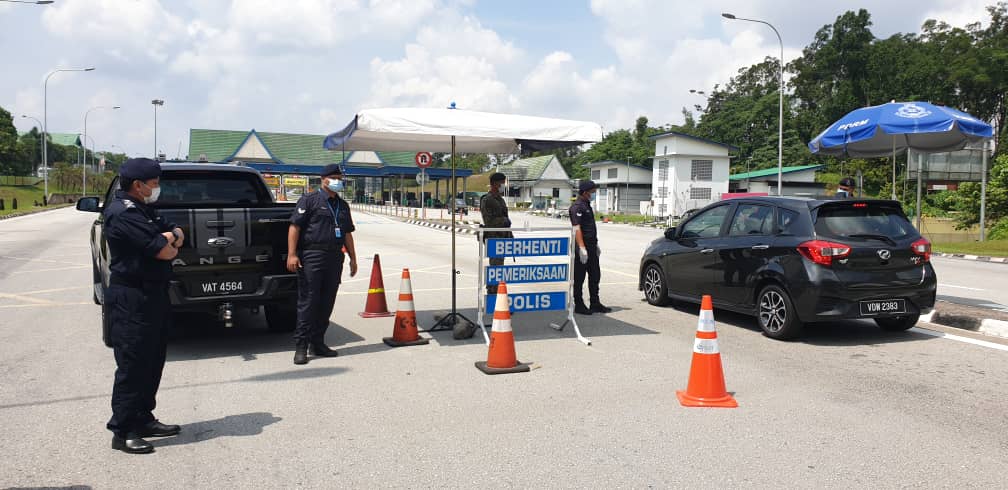KUALA LUMPUR, July 2 — Malaysia is the worst performer in a global return to normalcy index released on Thursday that The Economist magazine attributed to a surge in Covid-19 infections due to the Delta variant.
Malaysia sits at the bottom of The Economist’s global normalcy index that covers 50 of the world’s largest economies, measuring pre-pandemic activity levels such as traffic congestion rates, cinema box office revenues and footfall in shops over a year since the pandemic began.
The country scored 27.3 on the index, 16 points fewer than Taiwan. Taiwan sits one rank ahead of Malaysia at 47.3.
At the top of the chart is Hong Kong at 96.3, followed by New Zealand (87.8) and Pakistan (84.4). China is in 19th place with a score of 72.9, edging the US in 20th place.
Among countries in Southeast Asia, Indonesia leads in 40th place at 58.3, followed by Thailand (57.8). Singapore and the Philippines both scored 55.5.
The global normalcy index fell to just 35 in April 2020, before improving gradually over the following months. It currently stands at 66, suggesting that the world has travelled roughly half of the way back to pre-pandemic life, according to The Economist.
“Activity is not back to normal in any of the countries we track. The reading for China briefly returned to pre-pandemic levels during its celebrations for the lunar new year in February — owing in part to record-breaking box-office receipts — but the country now has a middling rank.
“Hong Kong and New Zealand — two places that have implemented effective measures against the coronavirus and suffered relatively few deaths — are currently at the top of our table.
“Malaysia, which is suffering from a deadly wave of infections caused by the more transmissible Delta variant, sits at the bottom,” the report stated.
Yesterday, Health director-general Dr Noor Hisham Abdullah said 28 new cases of Covid-19 variants were detected in the week of June 23-30, including 25 cases of variants of concern. Delta comprised the majority at 18 cases. As of June 30, a total of 40 cases of the Delta variant have been found across nearly the entire country, except for Kelantan, Sarawak, Perak, and Terengganu. This likely does not indicate the true spread of Delta in Malaysia due to extremely limited genomic sequencing.
This week, Covid-19 cases nationwide rose for the first time, by 18.5 per cent, compared to last week, reversing a decline over the past three consecutive weeks.
On average, public transport and traffic congestion levels have rebounded globally this year, although flights remain mostly grounded by government restrictions.
Malaysia’s public transport and traffic levels, however, have shown a sharp decline in the past two months since Movement Control Order (MCO) restrictions were reimposed in May.
The federal government will also impose a tighter two-week lockdown — the Enhanced MCO (EMCO) — on most of the state of Selangor from tomorrow, closing majority of factories in the country’s most developed state and imposing an 8pm curfew on residents in affected areas.
Closure of cinemas and sports stadiums also caused recreational activity to remain flat at zero in those venues, while the average time spent outside homes have fallen in line with the recent announcement of new restrictions.
In contrast, Hong Kong recorded a spike in sports attendance in June, alongside Denmark and the US, although the same cannot be said for cinemas. “Cinemas may never fully recover.”
The average retail footfall has also shown signs of rebound, together with office occupancy rate. This is particularly true for Pakistan, Saudi Arabia, Czech Republic and Belgium all of which have shown sharp increases in the two indicators this year.
“Zoom meetings and Amazon deliveries have been two prominent features of the Covid-19 pandemic. Most white-collar workers are betting on continued flexibility in how much time they spend in the workplace; office occupancy rates may never return to previous levels.
“But don’t write off bricks and mortar: retail footfall has been remarkably strong since the middle of last year,” the report stated.








